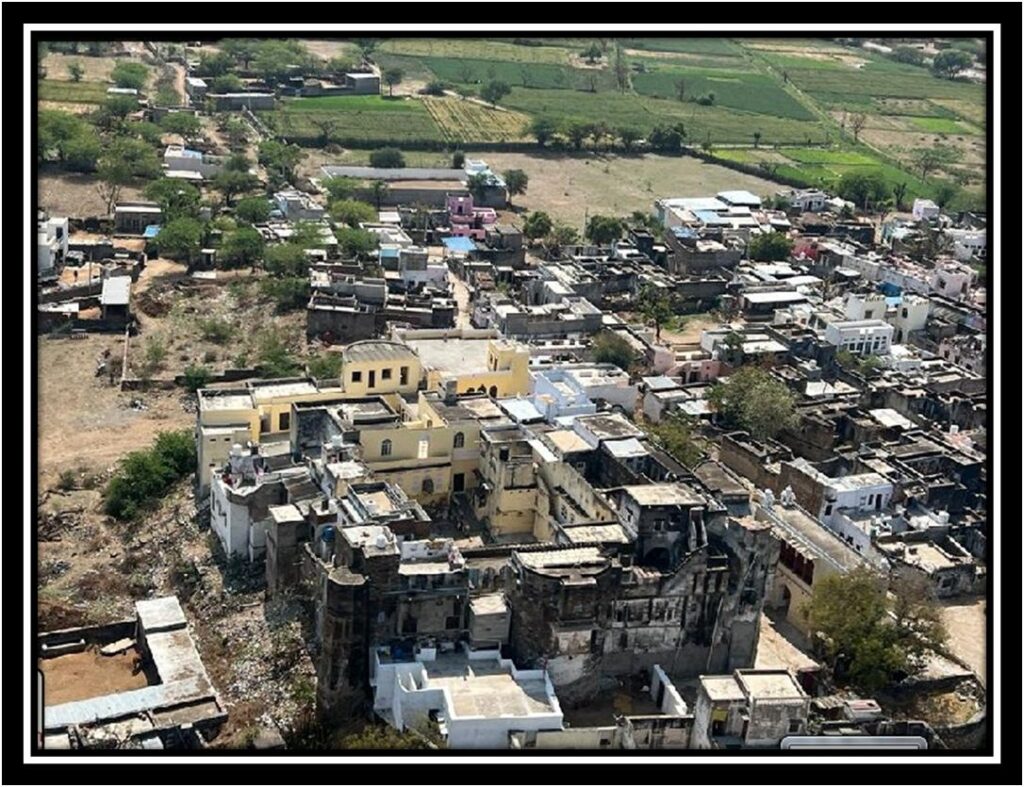Shergarh Fort (Masuda): A Forgotten Marvel of Rajputana Heritage

Introduction
Shergarh Fort, located in Masuda, Rajasthan, stands as a testament to the valor, architectural ingenuity, and rich history of the Rajput era. This magnificent fort, though lesser-known, boasts an impressive structure with imposing walls, intricate gateways, and historical remnants that speak volumes about its glorious past. Over the centuries, Shergarh Fort has witnessed numerous battles, royal successions, and strategic shifts that shaped its legacy.
Historical Background
Shergarh Fort has its roots in the Rajputana period, serving as a critical defensive stronghold in Masuda. Over time, the fort played a pivotal role in the regional politics of Rajasthan, witnessing the rise and fall of different dynasties. While the exact origins of the fort remain debated, it is believed that it was constructed to protect the region from invasions and to establish a firm foothold in Rajput-controlled territories.
The fort is named Shergarh, which translates to “Fort of the Lion,” symbolizing strength, resilience, and the indomitable spirit of its rulers. Unlike other more renowned forts of Rajasthan, Shergarh has retained a mysterious allure, making it a hidden gem for history enthusiasts and travelers alike.
Architectural Grandeur
Shergarh Fort is an exquisite blend of Rajput and Mughal architectural styles, reflecting the artistic advancements of its time. Some of its key architectural elements include:
1. Majestic Gateways
The entrance to Shergarh Fort is marked by massive gateways adorned with intricate carvings and symbolic motifs. These gateways served not just as entry points but also as defensive mechanisms against invading forces.
2. Fortified Walls & Bastions
The high walls and bastions of Shergarh were designed to withstand sieges and enemy attacks. Built using robust stonework, these walls narrate stories of battles fought and victories won.
3. Hidden Tunnels & Escape Routes
A fascinating aspect of the fort is its network of hidden tunnels and escape routes. These passages were strategically designed to aid the rulers in case of emergencies, allowing them to evacuate swiftly.
4. Palatial Residences & Temples
Within the fort, remnants of palatial residences and ancient temples can be found. These structures provide a glimpse into the regal lifestyle of the fort’s inhabitants and their religious inclinations.
5. Water Reservoirs & Stepwells
Given Rajasthan’s arid climate, the presence of well-designed stepwells and reservoirs within the fort highlights the ingenuity of Rajput engineers in water conservation and management.
Strategic Importance of Shergarh Fort
Shergarh Fort’s strategic location made it a vital military outpost. Since it was built on elevated ground, it provided a panoramic view of the surrounding landscape, enabling its defenders to anticipate enemy movements. Moreover, the fort played a crucial role in guarding trade routes and protecting the nearby settlements from external threats.
Legends & Folklore
Like many historical forts, Shergarh Fort is steeped in fascinating legends. One popular folklore speaks of a hidden treasure buried within its walls, which has intrigued treasure hunters for generations. Additionally, another legend talks about a brave Rajput warrior who single-handedly defended the fort against a powerful enemy, earning him a place in the annals of history.
Present Condition & Conservation Efforts
Despite its historical significance, Shergarh Fort remains relatively unexplored compared to other Rajasthani forts like Amer or Mehrangarh. Unfortunately, the fort has suffered from neglect and natural wear over the years, with some parts in ruins. However, local authorities and heritage conservationists are making efforts to restore and preserve this architectural marvel for future generations.
Heritage tourism is gradually bringing attention to Shergarh Fort, attracting history enthusiasts, researchers, and photographers eager to capture its grandeur. Furthermore, government and local bodies are working towards promoting the fort as a cultural and historical landmark.
Why Visit Shergarh Fort?
Shergarh Fort is a perfect destination for history buffs, adventure seekers, and travelers who wish to explore Rajasthan beyond the conventional tourist spots. Here’s why you should visit:
- Historical Significance: Experience the rich past of Rajput warriors and Mughal influences.
- Architectural Beauty: Marvel at the stunning carvings, fortifications, and hidden tunnels.
- Serene Environment: Unlike commercialized tourist spots, Shergarh offers peace and solitude amidst history.
- Photographic Opportunities: Capture the timeless beauty of ancient ruins and breathtaking landscapes.
How to Reach Shergarh Fort
Fort is well-connected by road and can be accessed from major cities in Rajasthan. The nearest major town is Ajmer, from where travelers can hire taxis or use public transport to reach Masuda.
Best Time to Visit
The ideal time to visit Shergarh Fort is during the winter months (October to March) when the weather is pleasant for exploration. Summers can be extremely hot, making it difficult to navigate the fort’s rugged terrain.
Conclusion
Shergarh Fort in Masuda stands as a symbol of Rajasthan’s glorious past, echoing the tales of bravery, architectural brilliance, and cultural heritage. Though overshadowed by more famous forts, its historical significance and unique features make it a must-visit destination for anyone passionate about history and heritage.
With ongoing conservation efforts, Shergarh Fort has the potential to regain its lost glory and emerge as a prominent landmark in Rajasthan’s historical landscape. Whether you are an explorer, historian, or simply an admirer of ancient architecture, Shergarh Fort promises a captivating journey into the heart of Rajputana’s legacy.





